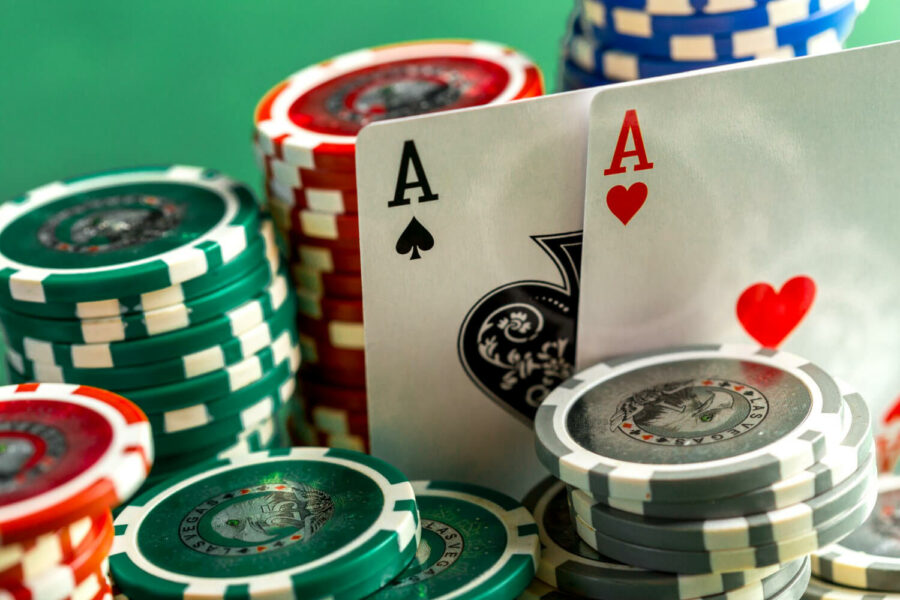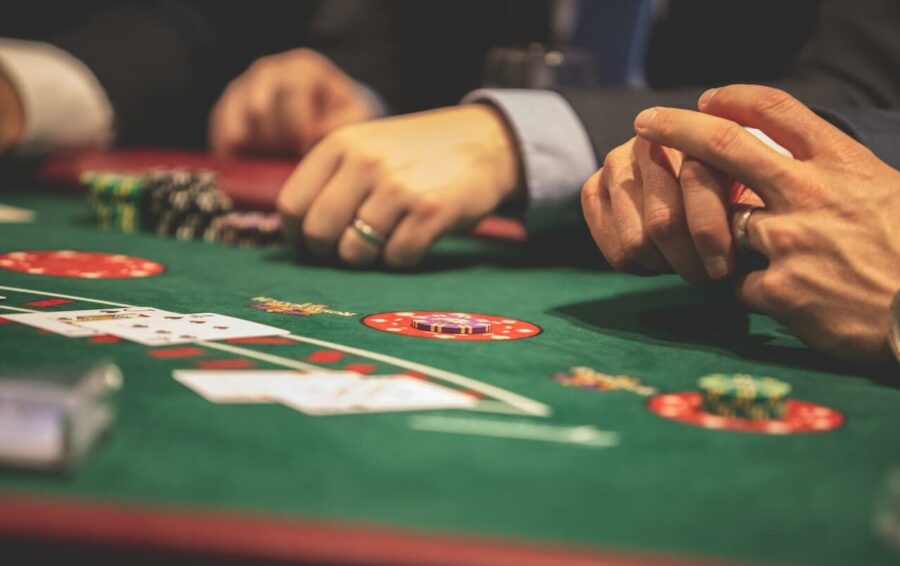Spanish 21 vs. Blackjack: What’s the Difference?

Blackjack is one of the most popular casino games, and it’s much-loved in both the US and many other countries. And as is common with many popular table games, several blackjack variations now exist as well. For players, this is great; if you either don’t like the ordinary version of blackjack or would like to play an alternative, you’re not short of options.
One popular alternative to blackjack is Spanish 21. But if you’re new to blackjack and casino gaming in general, you might be confused to understand what the difference is between blackjack and Spanish 21. As a result, you might find it difficult to get used to the rules of each game – which may put you at a disadvantage when you sit down to play.
But don’t worry, because you’re in the right place to discover the differences between Spanish 21 and blackjack. We’ll outline how the two games are both alike and different today, but that’s not all. You will also learn about the rules for Spanish 21, along with how you can increase your chances of winning and much more.
If this all sounds interesting to you, keep reading this complete Spanish 21 vs. blackjack guide.
What Is Spanish 21?
Spanish 21 is a type of blackjack that dates back to 1995. The game is also known as “Pontoon”, which is what you’ll hear it referred to if you ever visit Malaysia or Australia. In other places, you could hear others call the game “Spanish blackjack”, but the names all mean the same thing.
While there are a couple of key differences between Spanish 21 and blackjack, you will still play Spanish 21 on a blackjack table. Your aim is to ideally total 21 with your cards, or – at the very least – get as close as possible to that number. If you don’t get 21, you would still like to ideally get as close as possible to the number.
What Is Blackjack?
Blackjack is a popular card game that is played in many casinos around the world. Whereas Spanish 21 has only been around since 1995, blackjack is much older. The actual year that it originally came around is still hotly debated in the gaming community, but it probably originates from somewhere between the 16th and 18th centuries.
When you play blackjack, your objective is – like in Spanish 21 – to get as close to 21 as possible without going over that number. It has close relations to “twenty-one”, hence the objective to not go beyond that number.
In both blackjack and Spanish 21, the house edge varies depending on the number of decks. We will discuss each of these in further detail soon, though, so don’t worry too much about understanding what these are right now.
See also: What Is Double Down in Blackjack? The Complete Guide
Spanish 21 Rules
Now that you know a little more about what Spanish 21 and blackjack are, let’s take a closer look at the rules for Spanish 21. First and foremost, you should keep in mind that you will play Spanish 21 with a deck of 48 cards (this is different from the original version of blackjack).
You play Spanish 21 with either six or eight decks, and a dealer will hand you your cards, and they will keep a hole card. When you split your hands, you can only choose as many as four – so this is another thing to consider when you play.
Understanding the Different Bets in Spanish 21
Spanish 21 has a number of different bet types that you can place, and these could change your chances of winning. If you’ve got a poor hand, but the dealer doesn’t have a blackjack, you can consider using the “surrender”. You will get half of your bet back if you do this. However, it does come with a price; you’re not allowed to continue playing in the current game if you opt for this bet.
It’s also worth noting that although you can surrender in many casinos that offer Spanish 21, this is not always the case. So, you’ll need to check the specific rules for the venue that you’re wagering at.
Sometimes, the dealer will have a blackjack in Spanish 21 at the beginning. If that happens, all players will automatically lose. If, however, you get a total of 21 on your cards, you’ll get a payout.

Spanish 21 Strategy: What Are the Best Ways to Win?
When playing Spanish 21 or blackjack, understanding some of the top ways to win is always a good idea. Even though these do not guarantee success, you can keep what you learn in mind for each time you play – and at the very least, you’ll be able to call upon it when needed.
Only Use Insurance When Absolutely Necessary
One of the best things you can do in Spanish 21 is to only use insurance when it’s actually needed. When you place this kind of bet, the house edge is 24.7% – which is much higher than in any other Spanish 21 wager. As a result, you might find that the trade-off is not even worthwhile.
Consider the “Double Double Down”
Blackjack has a bet type called doubling down, and you’ll also find this in Spanish 21. But did you also know that in some cases of Spanish 21, you can “double double down”?
If you use this bet, you can improve your chances of winning. Moreover, many casinos will allow you to use this more than once.
Look for Casinos With Rules That Could Work in Your Favor
One of the nicest things about Spanish 21 is that the rules aren’t as stringent as some other types of casino games. As a result, some casinos will allow you to play with more flexibility – and that could be a big advantage if you’re a newcomer. Consider checking out these casinos and finding which ones work best for you.
What Is the House Edge in Spanish 21 and Blackjack?
When you play any casino game, you need to understand what the house edge is. In essence, this is the advantage that the casino will have over you. It applies to land-based casinos, but you’ll also need to be aware of it if you play online casino games as well.
As mentioned earlier, the house edge will differ depending on numerous factors in both Spanish 21 and blackjack. The house edge in Spanish 21 usually ranges from around 0.37% to 0.76% for different hits and splits. And when it comes to the Match the Dealer bet, house edges will range from 2.99% to 3.63%.
In blackjack, the house edge can be much more complicated to determine. It depends on several factors, such as whether players can split and the number of card decks used.
What Are the Different Spanish 21 Odds?
As is the case when you play different casino games, you will often have different odds for varying bet types and payouts in Spanish 21.
If you get a blackjack in Spanish 21, this is almost always paid out at 3/2 odds – which is just above EVS (1/1). Meanwhile, insurance bets can pay 2/1 or 3/1 – but as we’ve already discussed, the house edge is significant, and these wagers are best used sparingly.
Other bets will depend on how many cards you use to reach 21. You can expect the odds at your casino to be something like these:
- Five cards: 3/2
- 7+ cards: 3/1
- Successive or the same numbers and different suits: 3/2
- Successive or the same numbers and the same suit: 2/1
- Spades with the above: 3/1
- Match the Dealer (six decks): 4/1
- Match the Dealer (eight decks): 3/1
- Perfect Match (six decks): 9/1
- Perfect Match (eight decks): 12/1
See also: What Is Surrender in Blackjack?
Is Spanish 21 Better Than Blackjack?
Some players would consider Spanish 21 to be better than blackjack, but the answer to this question is ultimately subjective.
One thing that Spanish 21 is better than blackjack at is its level of entry. If you’re new to blackjack-style games, you will likely find that Spanish 21 is much easier to learn. On top of that, the rules are typically more relaxed in Spanish 21 – meaning that there’s a bit more room for trial and error.
However, blackjack is a better choice if you want to almost guarantee that a casino you visit will offer the game. While Spanish 21 is quite widespread, blackjack is still a lot more popular. Therefore, you won’t need to worry too much about not finding a casino that offers this game.
Our advice is to try both games and see which one works best for you. You might find that you want to play each of them intermittently as well, as it’s possible that you’ll get bored of one.
What Is the Difference Between Spanish 21 and Blackjack?
Spanish 21 and blackjack have a few key differences that you should consider when choosing which game you’d like to play. The first thing you must consider is that Spanish 21 only uses 48 cards, whereas blackjack has 52. Four 10s are missing from the Spanish 21 deck.
Another difference between Spanish 21 and blackjack is the types of bets available. For example, while you have “Match the Dealer” in Spanish 21, this is not the case in the traditional version of blackjack. On top of that, the house edges are also different.
You should also consider that some of the rules in Spanish 21 are different from blackjack. As we’ve already mentioned a few times in this guide, you’ve got a bit more room for maneuver when it comes to what you can bet and the like.

Is There Anything Similar Between Spanish 21 and Blackjack?
Despite the differences between Spanish 21 and blackjack, the two games also have a lot of similarities. This isn’t too surprising; after all, Spanish 21 was modeled on the fundamentals of blackjack.
Both games require you to aim for a total of 21 with your cards. Moreover, you will play against the dealer in both Spanish 21 and blackjack. You cannot surpass 21 in your total number of cards, either.
Another key similarity between the two games is that you typically will play on a similar table. As a result, you shouldn’t find it too hard to transition from one variation to the other.
Can I Use the Same Spanish 21 Rules in Blackjack?
You won’t be able to use each and everything that you learn in Spanish 21 for blackjack. For example, the different bets in Spanish 21 that don’t translate to blackjack will not serve you when you try the other game. On top of that, you’ll need to think about the fact that Spanish 21 does not have as many cards as blackjack.
Having said that, many of the things that you learn are still transferable between the two games. For example, your objective in both of them is to beat the dealer – and you will need to still aim for that magic 21 total. With this in mind, it’s very much possible that you can get a leg up in blackjack after trying out Spanish 21 for a while. Moreover, the learning curve will be much lower.
Spanish 21 vs. Blackjack: Now You Know the Key Differences
When doing research for different table games online, you will almost certainly stumble across blackjack. The game is one of the most popular to play in casinos, and you can play it almost everywhere in Vegas and further afield. Considering its widespread popularity, it’s a good place to begin when experimenting with different casino games – especially if you’re a big fan of card and table games.
But, like with poker, you will find a number of different options for blackjack. You can play many different variations of the game, and Spanish 21 is arguably the most popular and interesting of those. With that in mind, understanding the differences between both games is essential.
Now that you’ve read this guide, you should hopefully have a much better understanding of both Spanish 21 and blackjack. On top of that, you should be able to determine what the differences (and similarities) are between the pair of them.
See also: When to Split in Blackjack?











